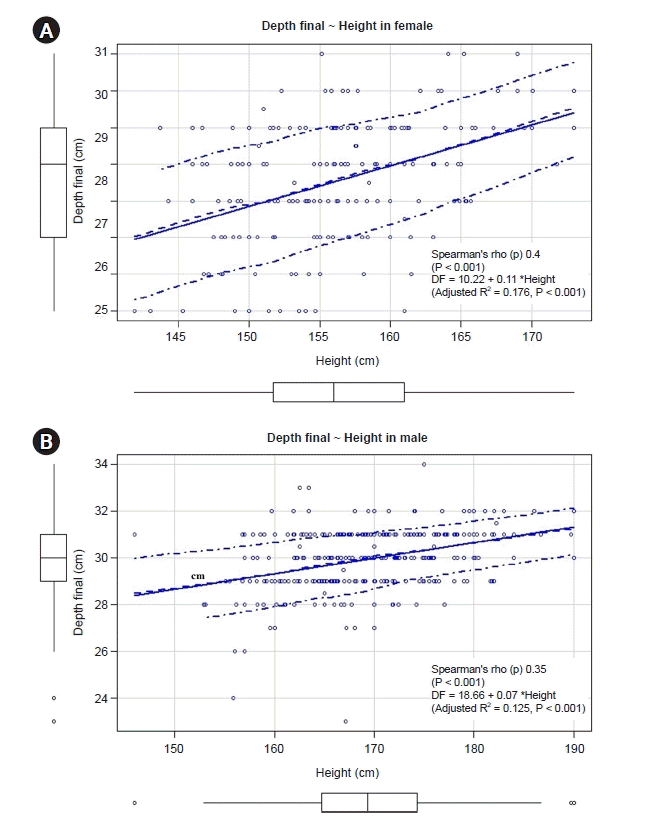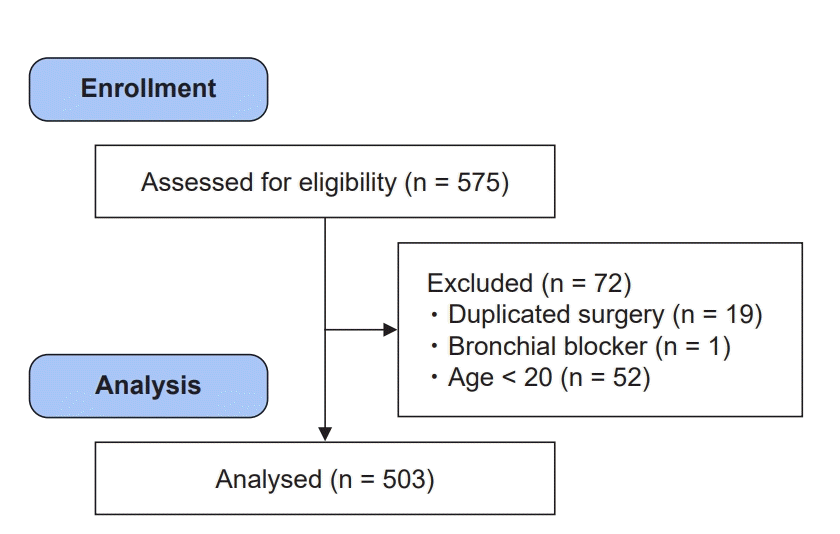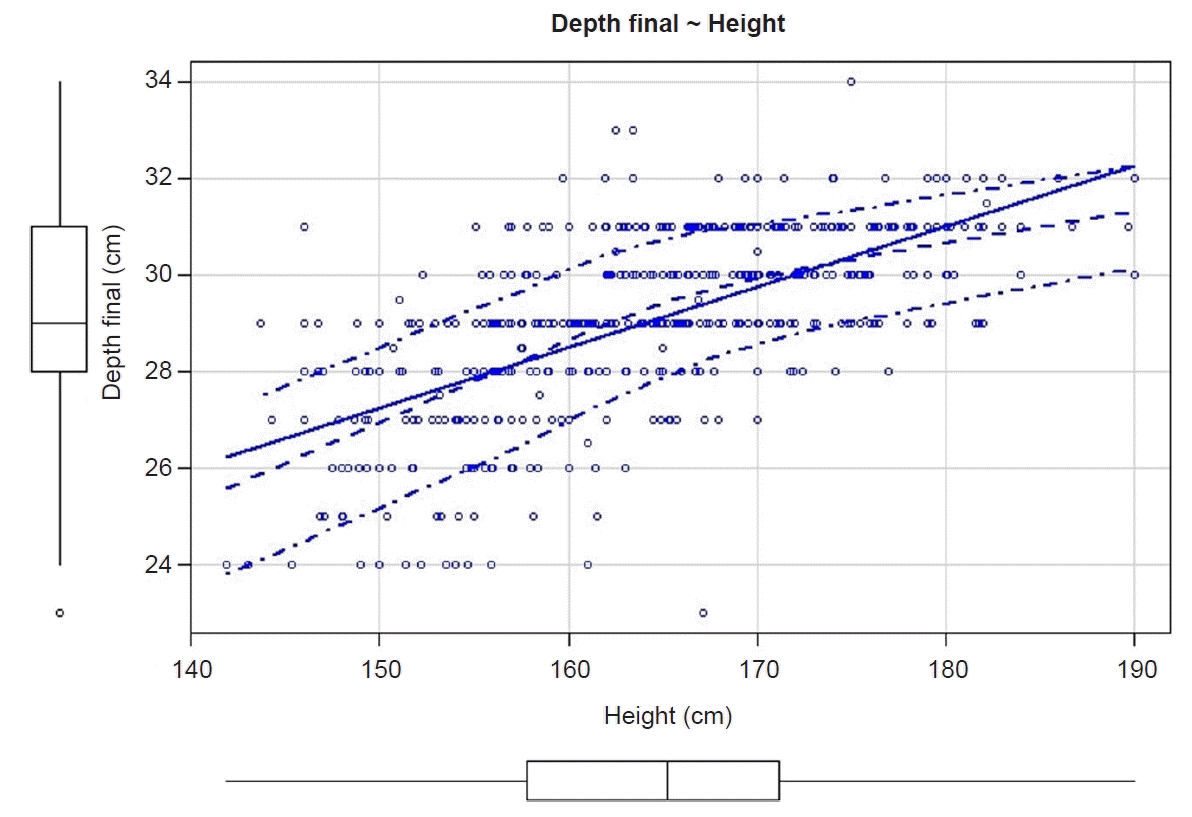Abstract
Background
Methods
Results
Conclusions
SUPPLEMENTARY MATERIALS
Supplementary Table 1.
Notes
DATA AVAILABILITY STATEMENT
The datasets generated during and/or analyzed during the current study are available from the corresponding author on reasonable request.
AUTHOR CONTRIBUTIONS
Conceptualization: Jae Hee Woo, Jong Wha Lee. Data curation: Jae Hee Woo, Sooyoung Cho, Yongju Choi, Jong Wha Lee. Formal analysis: Sooyoung Cho, Jong Wha Lee. Methodology: Jae Hee Woo, Sooyoung Cho, Jong Wha Lee. Visualization: Sooyoung Cho. Writing - original draft: Jae Hee Woo, Sooyoung Cho, Youn Jin Kim, Dong Yeon Kim, Yongju Choi, Jong Wha Lee. Writing - review & editing: Jae Hee Woo, Sooyoung Cho, Youn Jin Kim, Dong Yeon Kim, Yongju Choi, Jong Wha Lee. Investigation: Yongju Choi. Resources: Youn Jin Kim. Software: Sooyoung Cho, Yongju Choi. Supervision: Youn Jin Kim, Dong Yeon Kim, Jong Wha Lee. Validation: Jae Hee Woo, Sooyoung Cho.
REFERENCES
Fig. 3.

Table 1.
| Variable | Value |
|---|---|
| Sex | |
| Female | 173 (34.4) |
| Male | 330 (65.6) |
| Age (yr) | 57.2 ± 17.4 |
| Height (cm) | 164.9 ± 9.3 |
| Weight (kg) | 64.0 ± 11.2 |
| Calculated depth (cm) | |
| Eldawlatly et al. [4] | 26.7 ± 1.4* |
| Lin and Cherng [5] | 28.4 ± 1.8* |
| Brodsky et al. [2] | 28.7 ± 1.0* |
| Bahk and Oh [6] | 28.7 ± 1.4* |
| Chow et al. [7] | 28.2 ± 1.4* |
| Takita et al. [8] | 29.0 ± 0.9* |
| Measured depth (cm) | |
| Depth supine | 29.0 ± 1.8 |
| Depth decubitus | 29.1 ± 1.8 |
| Depth final | 29.1 ± 1.9 |
| Size of DLT (Fr) | |
| 32 | 21 (4.2) |
| 33 | 43 (8.5) |
| 35 | 197 (39.2) |
| 37 | 242 (48.1) |
| Depth adjustment | |
| Non-applicable | 142 (28.2) |
| Not adjusted | 274 (54.5) |
| Pull | 27 (5.4) |
| Push | 60 (11.9) |
| Adjustment distance (cm) | 0.1 ± 0.7 |
| Size of DLT determined by Slinger’s method (Fr) | |
| 32 | 29 (5.8) |
| 35 | 91 (18.1) |
| 37 | 85 (16.9) |
| 39 | 140 (27.8) |
| 41 | 158 (31.4) |
| Size difference (Fr) | –2.5 ± 1.9 |
| Size discrepancy | |
| Bigger | 20 (4.0) |
| Match | 72 (14.3) |
| Smaller | 411 (81.7) |
| Height ranges | |
| HR1 | 127 (25.2) |
| HR2 | 112 (22.3) |
| HR3 | 149 (29.6) |
| HR4 | 115 (22.9) |
Table 2.
| Variable | HR1 (n = 127) | HR2 (n = 112) | HR3 (n = 149) | HR4 (n = 115) | P value | |
|---|---|---|---|---|---|---|
| Sex | < 0.001 | |||||
| Female | 109 (85.8) | 45 (40.2) | 17 (11.4) | 2 (1.7) | ||
| Male | 18 (14.2) | 67 (59.8) | 132 (88.6) | 113 (98.3) | ||
| Age (yr) | 64.2 ± 11.6 | 61.9 ± 14.2 | 57.9 ± 17.3 | 43.8 ± 18.5 | < 0.001 | |
| Height (cm) | 152.9 ± 3.9 | 161.6 ± 2.0 | 168.2 ± 2.1 | 177.0 ± 4.0 | < 0.001 | |
| Weight (kg) | 56.7 ± 8.4 | 61.8 ± 10.2 | 66.6 ± 9.3 | 71.0 ± 11.6 | < 0.001 | |
| Calculated depth (cm) | ||||||
| Eldawlatly et al. [4] | 24.9 ± 0.6* | 26.2 ± 0.3* | 27.2 ± 0.3* | 28.5 ± 0.6* | < 0.001 | |
| Lin and Cherng [5] | 26.0 ± 0.8* | 27.7 ± 0.4* | 29.0 ± 0.4* | 30.8 ± 0.8 | < 0.001 | |
| Brodsky et al. [2] | 27.3 ± 0.4 | 28.3 ± 0.2* | 29.0 ± 0.2* | 30.0 ± 0.4* | < 0.001 | |
| Bahk and Oh [6] | 26.9 ± 0.6† | 28.2 ± 0.3* | 29.2 ± 0.3* | 30.5 ± 0.6 | < 0.001 | |
| Chow et al. [7] | 26.4 ± 0.6* | 27.7 ± 0.3* | 28.7 ± 0.3* | 30.0 ± 0.6* | < 0.001 | |
| Takita et al. [8] | 27.8 ± 0.4 | 28.7 ± 0.2‡ | 29.3 ± 0.2§ | 30.2 ± 0.4† | < 0.001 | |
| Measured depth (cm) | ||||||
| Depth supine | 27.5 ± 1.8 | 28.7 ± 1.7 | 29.7 ± 1.2 | 30.2 ± 1.1 | < 0.001 | |
| Depth decubitus | 27.4 ± 1.8 | 29.0 ± 1.5 | 29.7 ± 1.3 | 30.4 ± 1.0 | < 0.001 | |
| Depth final | 27.4 ± 1.8 | 28.9 ± 1.7 | 29.7 ± 1.3 | 30.4 ± 1.0 | < 0.001 | |
| Size of DLT (Fr) | < 0.001 | |||||
| 32 | 17 (13.4) | 4 (3.6) | 0 (0.0) | 0 (0.0) | ||
| 33 | 31 (24.4) | 9 (8.0) | 3 (2.0) | 0 (0.0) | ||
| 35 | 75 (59.1) | 64 (57.1) | 43 (28.9) | 15 (13.0) | ||
| 37 | 4 (3.1) | 35 (31.2) | 103 (69.1) | 100 (87.0) | ||
| Depth adjustment | 0.428 | |||||
| Non-applicable | 34 (26.8) | 30 (26.8) | 43 (28.9) | 35 (30.4) | ||
| Not adjusted | 74 (58.3) | 57 (50.9) | 86 (57.7) | 57 (49.6) | ||
| Pull | 7 (5.5) | 6 (5.4) | 9 (6.0) | 5 (4.3) | ||
| Push | 12 (9.4) | 19 (17.0) | 11 (7.4) | 18 (15.7) | ||
| Adjustment distance (cm) | 0.1 ± 0.9 | 0.2 ± 0.7 | -0.0 ± 0.6 | 0.2 ± 0.6 | 0.123 | |
| Size of DLT determined by Slinger’s method (Fr) | < 0.001 | |||||
| 32 | 29 (22.8) | 0 (0.0) | 0 (0.0) | 0 (0.0) | ||
| 35 | 80 (63.0) | 11 (9.8) | 0 (0.0) | 0 (0.0) | ||
| 37 | 18 (14.2) | 48 (42.9) | 17 (11.4) | 2 (1.7) | ||
| 39 | 0 (0.0) | 53 (47.3) | 87 (58.4) | 0 (0.0) | ||
| 41 | 0 (0.0) | 0 (0.0) | 45 (30.2) | 113 (98.3) | ||
| Size difference (Fr) | –0.4 ± 1.7 | –2.4 ± 1.2 | –3.0 ± 1.3 | –4.2 ± 0.8 | < 0.001 | |
| Size discrepancy | < 0.001 | |||||
| Bigger | 20 (15.7) | 0 (0.0) | 0 (0.0) | 0 (0.0) | ||
| Match | 62 (48.8) | 9 (8.0) | 0 (0.0) | 1 (0.9) | ||
| Smaller | 45 (35.4) | 103 (92.0) | 149 (100.0) | 114 (99.1) |
Table 3.
| Variable | Sex | P value | |
|---|---|---|---|
| Female (n = 173) | Male (n = 330) | ||
| Age (yr) | 59.1 ± 14.7 | 56.2 ± 18.6 | 0.056 |
| Height (cm) | 156.4 ± 6.5 | 169.3 ± 7.1 | < 0.001 |
| Weight (kg) | 58.3 ± 9.5 | 67.1 ± 10.8 | < 0.001 |
| Calculated depth (cm) | |||
| Eldawlatly et al. [4] | 25.5 ± 1.0* | 27.4 ± 1.1* | < 0.001 |
| Lin and Cherng [5] | 26.7 ± 1.3* | 29.2 ± 1.4* | < 0.001 |
| Brodsky et al. [2] | 27.7 ± 0.7 | 29.2 ± 0.8* | < 0.001 |
| Bahk and Oh [6] | 27.4 ± 1.0 | 29.4 ± 1.1* | < 0.001 |
| Chow et al. [7] | 26.9 ± 1.0* | 28.9 ± 1.1* | < 0.001 |
| Takita et al. [8] | 28.1 ± 0.7* | 29.4 ± 0.7* | < 0.001 |
| Measured depth (cm) | |||
| Depth supine | 27.6 ± 1.8 | 29.8 ± 1.3 | < 0.001 |
| Depth decubitus | 27.6 ± 1.7 | 29.9 ± 1.3 | < 0.001 |
| Depth final | 27.6 ± 1.7 | 29.9 ± 1.3 | < 0.001 |
| Size of DLT (Fr) | < 0.001 | ||
| 32 | 20 (11.6) | 1 (0.3) | |
| 33 | 38 (22.0) | 5 (1.5) | |
| 35 | 114 (65.9) | 83 (25.2) | |
| 37 | 1 (0.6) | 241 (73.0) | |
| Depth adjustment | 0.470 | ||
| Non-applicable | 43 (24.9) | 99 (30.0) | |
| Not adjusted | 98 (56.6) | 176 (53.3) | |
| Pull | 12 (6.9) | 15 (4.5) | |
| Push | 20 (11.6) | 40 (12.1) | |
| Adjustment distance (cm) | 0.1 ± 0.9 | 0.1 ± 0.6 | 0.343 |
| Size of DLT determined by Slinger’s method (Fr) | < 0.001 | ||
| 32 | 29 (16.8) | 0 (0.0) | |
| 35 | 91 (52.6) | 0 (0.0) | |
| 37 | 53 (30.6) | 32 (9.7) | |
| 39 | 0 (0.0) | 140 (42.4) | |
| 41 | 0 (0.0) | 158 (47.9) | |
| Size difference (Fr) | –0.9 ± 1.7 | –3.3 ± 1.3 | < 0.001 |
| Size discrepancy | < 0.001 | ||
| Bigger | 20 (11.6) | 0 (0.0) | |
| Match | 64 (37.0) | 8 (2.4) | |
| Smaller | 89 (51.4) | 322 (97.6) | |




 PDF
PDF Citation
Citation Print
Print





 XML Download
XML Download